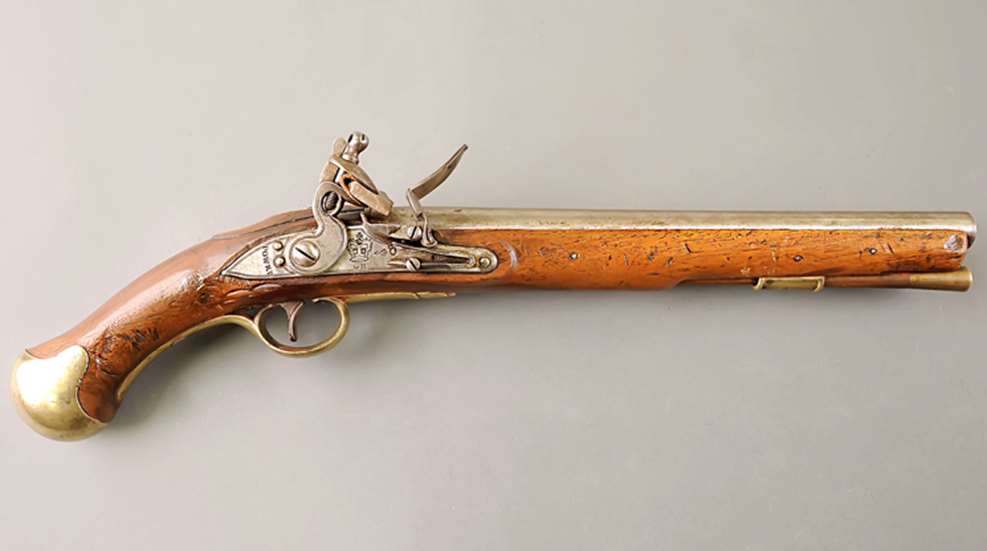
Being an island nation, Great Britain has relied heavily on her naval prowess for protection and survival. More than once, English ships came to the rescue and staved off imminent invasion.
Aside from defeating the Spanish Armada in 1588, Britain’s most famous maritime feat was probably the thrashing it gave the combined French and Spanish vessels at the Battle of Trafalgar in 1805. Despite the tragic loss of England’s premier sailor, Vice Admiral Horatio Nelson, this decisive engagement ended France’s threat on the high seas for the remainder of the Napoleonic Wars.
 It’s usually accepted that in the age of fighting sail ships, combatants traditionally pounded one another to pieces firing broadsides with their cannons and carronades at a distance until the enemy surrendered or was sunk. Actually, many battles were settled with superior seamanship and personal combat. No lesser an authority than Nelson himself coined the axiom, “No captain can do very wrong if he places his ship alongside that of the enemy.”
It’s usually accepted that in the age of fighting sail ships, combatants traditionally pounded one another to pieces firing broadsides with their cannons and carronades at a distance until the enemy surrendered or was sunk. Actually, many battles were settled with superior seamanship and personal combat. No lesser an authority than Nelson himself coined the axiom, “No captain can do very wrong if he places his ship alongside that of the enemy.”
This meant that a variety of small arms, such as cutlasses, pikes, muskets and pistols, were normally carried in ships’ stores for use in close work when alongside, boarding or during the frequent shore patrols and forays in which naval personnel were routinely called upon to engage in close combat.
The Pattern 1801 Sea Service pistol was one of the most widely manufactured of British handguns during the Napoleonic period. Like the “Brown Bess” musket—which underwent various modifications and facelifts during its more-than-100-year lifespan but still maintained its basic character—the 1801 was not all that changed from the Pattern 1716 and Pattern 1716/1777 Sea Service pistols from which it was derived.
This was a serious hunk of handgun. Possessed of a robust, flat, India-pattern flintlock mechanism, caliber was .56, and its smoothbore barrel measured 12". Sporting a full-length walnut stock and brass furniture, overall length was 19¼". Steel parts were left in the bright. On the left side of the gun, a 7½"-long belt hook was firmly affixed over the sideplate via a pin and the rear lock screw (“sidenail”). This accessory, not seen on similar-appearing Land Service pistols, allowed Jack Tar to secure the pistol to his belt, crossbelt or sash before and after he had fired its single shot.
 Reloading during a melee was usually not possible, and while it is customary to assume the pistol, because of its substantial rounded buttcap, could also be used as a bludgeon, this was normally not the case as the practice was rough on the hardware and a cutlass was a much better tool for hand-to-hand combat. The pistols were loaded using prepared paper cartridges containing a round lead bullet and powder for priming and the main charge.
Reloading during a melee was usually not possible, and while it is customary to assume the pistol, because of its substantial rounded buttcap, could also be used as a bludgeon, this was normally not the case as the practice was rough on the hardware and a cutlass was a much better tool for hand-to-hand combat. The pistols were loaded using prepared paper cartridges containing a round lead bullet and powder for priming and the main charge.
The 1801 here is in excellent condition and is typical of its type, with stamped (rather than engraved) lock markings and a “storekeeper’s mark” dating the gun to 1806. Despite their age, these pistols do turn up with some regularity on the collector market. If complete and in good shape, $2,800 is a very fair price for one.
Gun: Pattern 1801 Sea Service pistol
Manufacturer: Various contractors. Assembled at the Tower of London Armoury
Caliber: .56
Condition: NRA Excellent (Antique Gun Standards)
Manufactured: 1806
Value: $2,850



































